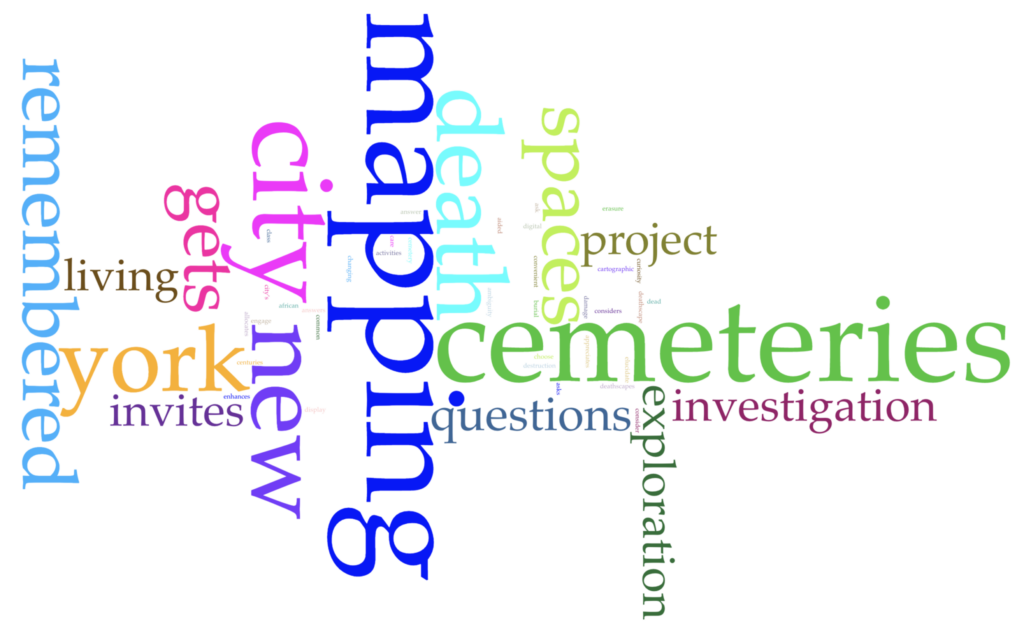We’ve all made the most of our time this week since spring break. Nadia has made extensive updates to our site on GitHub (check us out!) and has been working hard to put our dreams into code. Our horizontal timeline is meant to place users within New York City history (at least the time points we’ve deemed relevant to our research), and the vertical timeline will highlight our research on our select locations. And now they are speaking to one another (the circles at the bottom of the horizontal timeline link to each pinned item on the vertical timeline; click around, and you’ll see what we mean). These timelines are built with different tools based on different code, so it took Nadia some time to bring them together, but she was determined to make it work, and we’re so thrilled.
As we’re building up the site, and as we’re getting further along in our research, we’ve found that aspects of our data management sheet weren’t working how we wanted them to. We’ve been reviewing this sheet in every meeting, and we’re adjusting along the way. Lisa and Nadia have very helpfully included a tab for each page of our site, and the first tab in the spreadsheet is for instructions on how each column of the spreadsheet is meant to be used. When a change is proposed, we discuss the pros and cons from the perspective of the researcher inputting the data and also Nadia’s perspective as the developer–is adding our data intuitive, and are we adding it in a way that makes it easier for Nadia’s codes to automate updates as much as possible?
Asma met with her metaphysics professor this week to discuss how we can ethically share images and data from our research. She’s also been hard at work drafting a plan for our forthcoming audio episodes, and her professor has agreed to join us for the first one. Stay tuned!
We’re so thrilled with our definitions of the project, and lane has worked to put them into image/text boxes that he will be debuting in our first posts on Instagram and Facebook–so be on the lookout. We love them so much we’re going to find ways to integrate them into our Commons site homepage and our GitHub About page.
I, Bri, love our project definitions so much that, inspired by Bret’s recent word cloud post, I went ahead and made a Voyant Tools word cloud from them.

Looking back there are many little things here and there that we’ve changed along the way since February, and we’re always adapting to make sure everyone on the team is being cared for and checking that our expectations and deliverables are realistic. We spoke briefly about our decision to include ourselves as our primary audience, as well as our class. At the time it felt like maybe we wouldn’t be doing enough work, or our work might be too self-centered. But we’re feeling strongly this was the best decision for our group. It’s allowed us to appreciate how much of our project building is about the building and the process. “Done” is going to happen because we will run out of time in the semester, but we’re confident that the state of our project will be something we’re all so proud to share when we get there.
[This entry was originally posted to DHUM 70002 Digital Humanities: Methods and Practices (Spring 2021) in Group Project Updates and tagged group project updates, mapping cemeteries on April 8, 2021 by Brianna Caszatt.]








